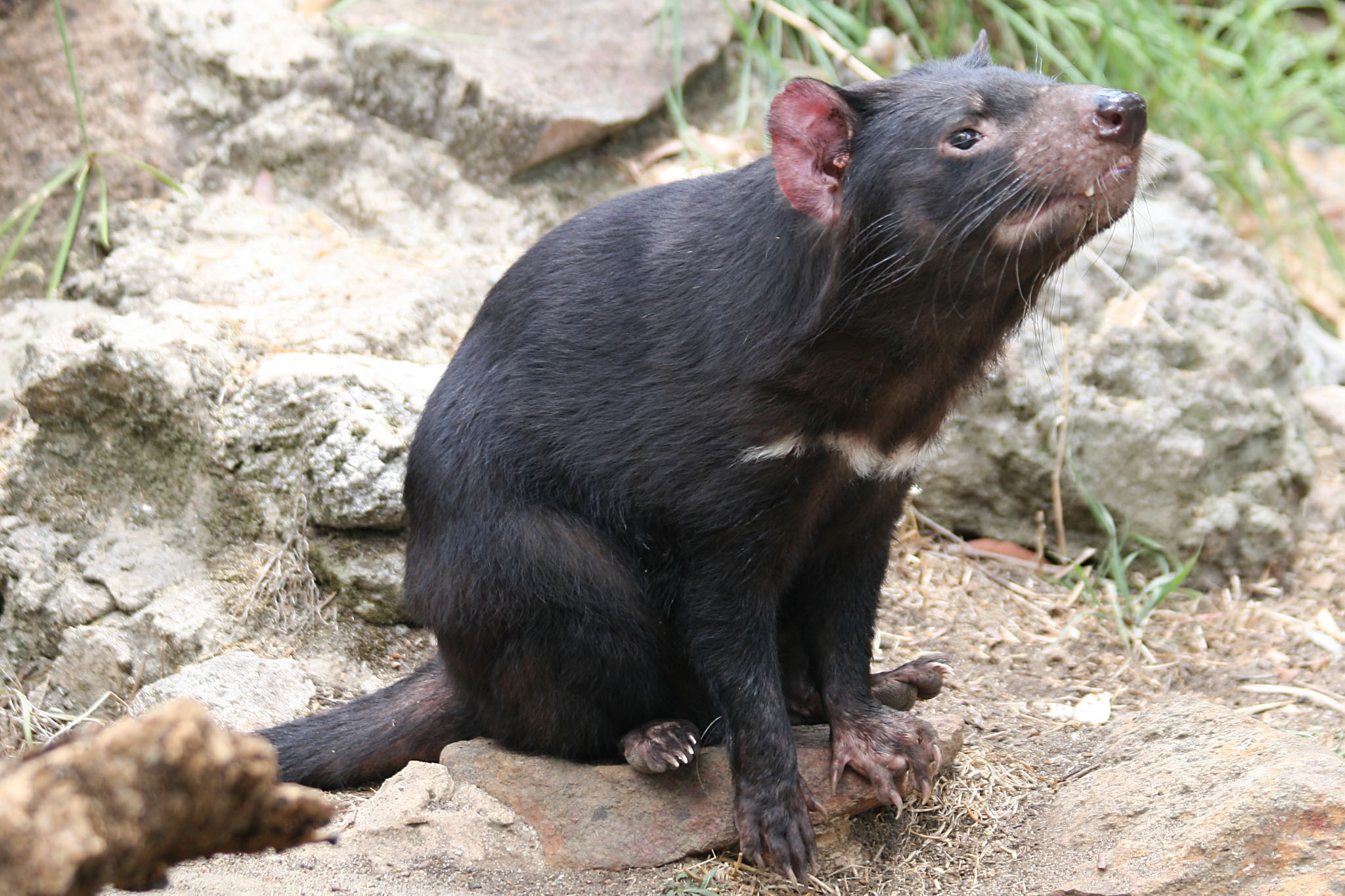In a research paper published in March 2017 in the prestigious scientific journal Nature, an international group of immunologists lead by Cesar Tovar have announced an effective new therapy for treating tumours in Tasmanian devils (Sarcophilus harrisii) . The transmissible cancer, known simply as devil facial tumour disease (DFTD) was effectively treated following novel immunotherapy leaving nothing but a little scar tissue where the tumours once were. The therapy, which some have called “fighting cancer with cancer” has taken 6 years of research to develop, and yields a 60% survival rate for those individuals undergoing the treatment.
The devils examined in the study were exposed to several different protocols, but overall the examination indicated that immunisation with DFTD cells expressing the surface molecule MHC-I corresponded with effective anti-tumour responses. That is, tumours the size of golf balls disappeared in as little as 3 months. As outlined in the research paper, the recognition of allografts and malignant cells by the adaptive immune system depends on the interaction of the immune T cells of the host animal with the molecules of the major histocompatibility complex class I (MHC-I) expressed on the surface of nucleated cells. According to the paper, DFTD cancer cells do not express MHC-I. Accordingly it has been predicted that this a key mechanism by which infecting tumour cells proliferate and escape immune detection in devils. The study showed that exposing the cancerous devil to DFTD cells combined with the cytokine (chemical messenger) interferon gamma (IFNγ) can restore MHC-I expression, and potentially lead to allo-recognition. This understanding of the mechanism of immuno-evasion allows the researchers to form the basis of a vaccine.
“When infected, animals usually die within a few months, and peculiarly demonstrate no evidence of antibody or immune cell response.”
One of the reasons that this disease has been so devastating to the devil population is that the cancer cell functions as an infectious agent, transmitted from one individual to another by biting. These carnivores are known to behave extremely ferociously to each other, especially when feeding, thus this method of transmission is understandably common. The Tasmanian devil, due to the anatomy of its thick skull and strong neck, allow it to generate a very strong bite per unit body mass, meaning transfer of infectious material is likely. When infected, animals usually die within a few months, and peculiarly demonstrate no evidence of antibody or immune cell response.
Although transmissible cancers are rare, occurring in nature only in domestic dogs, Tasmanian devils and shellfish, the results of this study are nonetheless of interest to the cancer research of mammals at large. This also bears relevance to the complex science of conservation ecology, as releasing insurance populations unaffected by DFTD into the wild will expose them to the disease, requiring vaccination for protection. This situation is common for many disease-beleaguered species, of which subpopulations cannot be released due to an impermissibly high risk of infection. Additionally, the design and methodology of the research provides a guideline for experimentation on endangered species, which prohibits large sample sizes.
Tasmanian devils of the taxa Dasyuridae, are only a little larger than a domestic cat, but are in fact the largest carnivorous marsupials in the world. The species is thus a target of many conservation efforts. This follows the extinction of the thylacine (or Tasmanian Tiger) in captivity in 1936, although sightings of this large dingo-like marsupial are often reported. Unfortunately the rather limited population of devils have suffered from widespread and violent cancerous facial tumours in the last few decades. The problem presented by widespread disease is compounded by other barriers to the species’ survival, not least the issue of limited habitat on the Australian island state of Tasmania. Between 90 per cent and 95 per cent of devils have been entirely wiped out since the emergence of the devil facial tumour disease was first documented in 1996. There are but a few thousand individuals surviving devils now alive, both in the wild and in conservation projects. This is a reduction of tens of thousands from the 90s, and in 2009 resulted in the federal government listing the species as endangered.
“The exciting thing is that we are working towards a vaccine and for a vaccine to work, the immune system has to target the tumour cells and kill them. We now have evidence that that can happen.”
Other conservation efforts have been put in place to protect the devils, including the establishment insurance populations such as Maria Island off the east coast of Tasmania. With limited prey, those wild populations that do exist are often drawn to encroaching human settlements, to feed upon domestic refuse or roadkill. This unfortunately leads to a further reduction of the population size, as Tasmanian devils have dark colouring and are often run over on busy roads.
This research may give a new lease of life to the species. Under the therapeutic protocols of the experiment, the regression of the disease was rapid, and closely correlated with antibody responses against artificially introduced DFTD cells. This data also gives support to the hypothesis that immunisation of Tasmanian devils with DFTD cells will successfully activate an antibody-mediated (humoral) response against the disease, to remove established tumours. This could mean the development of an effective protective DFTD vaccine and ultimately the preservation of the species, the objective being to “reintroduce a robust and genetically diverse population into the wild”. Two devils subjected to the experimental therapy unfortunately did not respond, which may have been due to failed activation of their immune system activated because the cytokines may have been added at inappropriate times.
However, Professor Gregory Woods, of the research team, has spoken optimistically of the project: “The exciting thing is that we are working towards a vaccine and for a vaccine to work, the immune system has to target the tumour cells and kill them. We now have evidence that that can happen.”







